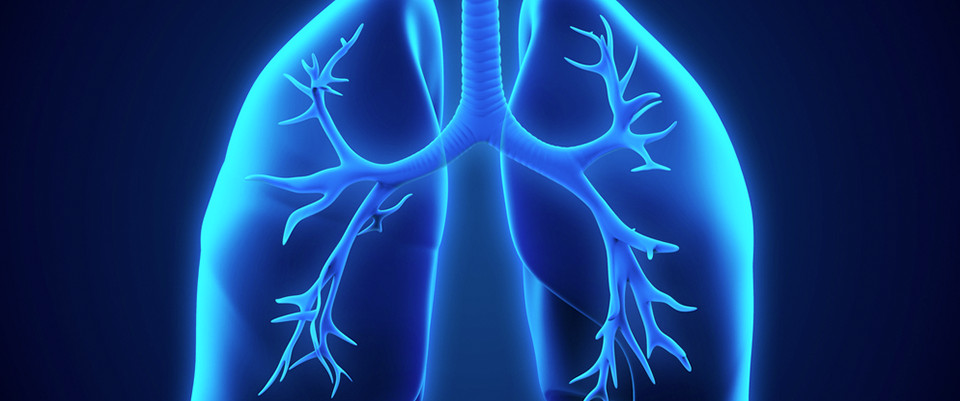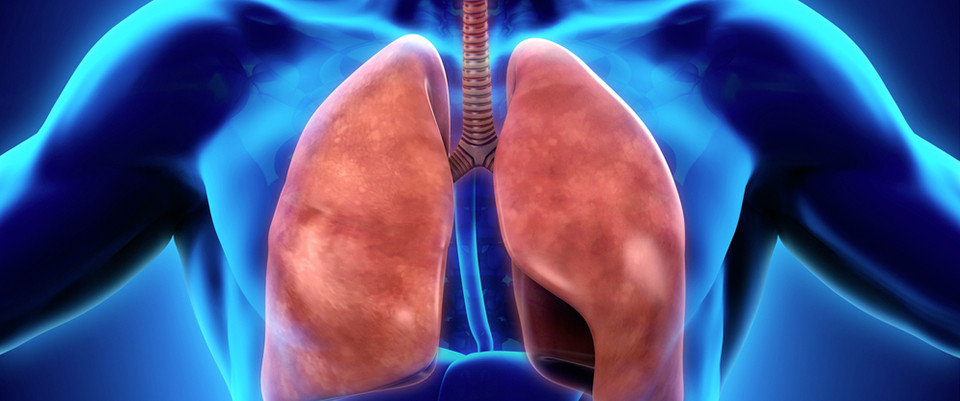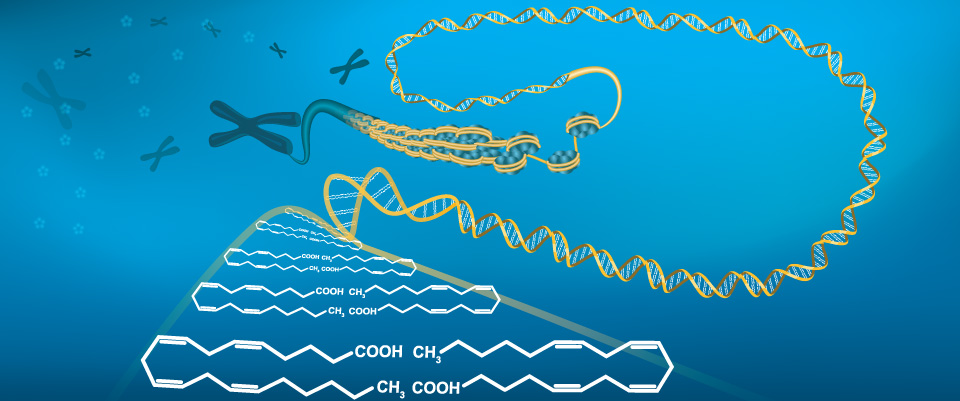PubMed
The quest for tolerant varieties: the importance of integrating "omics" techniques to phenotyping.
Related Articles
The quest for tolerant varieties: the importance of integrating "omics" techniques to phenotyping.
Front Plant Sci. 2015;6:448
Authors: Zivy M, Wienkoop S, Renaut J, Pinheiro C, Goulas E, Carpentier S
Abstract
The primary objective of crop breeding is to improve yield and/or harvest quality while minimizing inputs. Global climate change and the increase in world population are significant challenges for agriculture and call for further improvements to crops and the development of new tools for research. Significant progress has been made in the molecular and genetic analysis of model plants. However, is science generating false expectations? Are 'omic techniques generating valuable information that can be translated into the field? The exploration of crop biodiversity and the correlation of cellular responses to stress tolerance at the plant level is currently a challenge. This viewpoint reviews concisely the problems one encounters when working on a crop and provides an outline of possible workflows when initiating cellular phenotyping via "-omic" techniques (transcriptomics, proteomics, metabolomics).
PMID: 26217344 [PubMed]
Potential of metabolomics to reveal Burkholderia cepacia complex pathogenesis and antibiotic resistance.
Related Articles
Potential of metabolomics to reveal Burkholderia cepacia complex pathogenesis and antibiotic resistance.
Front Microbiol. 2015;6:668
Authors: Shommu NS, Vogel HJ, Storey DG
Abstract
The Burkholderia cepacia complex (Bcc) is a collection of closely related, genetically distinct, ecologically diverse species known to cause life-threatening infections in cystic fibrosis (CF) patients. By virtue of a flexible genomic structure and diverse metabolic activity, Bcc bacteria employ a wide array of virulence factors for pathogenesis in CF patients and have developed resistance to most of the commonly used antibiotics. However, the mechanism of pathogenesis and antibiotic resistance is still not fully understood. This mini review discusses the established and potential virulence determinants of Bcc and some of the contemporary strategies including transcriptomics and proteomics used to identify these traits. We also propose the application of metabolic profiling, a cost-effective modern-day approach to achieve new insights.
PMID: 26217312 [PubMed]
Selenocysteine-independent suppression of UGA codons in the archaeon Methanococcus maripaludis.
Related Articles
Selenocysteine-independent suppression of UGA codons in the archaeon Methanococcus maripaludis.
Biochim Biophys Acta. 2015 Jul 24;
Authors: Seyhan D, Jehmlich N, von Bergen M, Fersch J, Rother M
Abstract
BACKGROUND: Proteins containing selenocysteine (sec) are found in Bacteria, Eukarya, and Archaea. While selenium-dependence of methanogenesis from H2+CO2 in the archaeon Methanococcus maripaludis JJ is compensated by induction of a set of cysteine-containing homologs, growth on formate is abrogated in the absence of sec due to the dependence of formate dehydrogenase (Fdh) on selenium. Despite this dependence, formate-dependent growth occurs after prolonged incubation of M. maripaludis mutants lacking sec.
METHODS: To study this phenomenon, a M. maripaludis strain with only one Fdh isoform and an FdhA selenoprotein C-terminally tagged for affinity enrichment was constructed. Factors required for sec synthesis were deleted in this strain and translation of UGA in fdhA was analyzed physiologically, enzymatically, immunologically, and via mass spectrometry.
RESULTS: M. maripaludis JJ mutants lacking sec synthesis grew at least five times more slowly than the wild type on formate due to a 20-35-fold reduction of Fdh activity. The enzyme in the mutant strains lacked sec but was still produced as a full-length protein. Peptide mass spectrometry revealed that both cysteine (cys) and tryptophan (trp) were inserted at the UGA encoding sec without apparent mutations in tRNA(cys) or tRNA(trp), respectively.
CONCLUSIONS: We demonstrate that M. maripaludis has the inherent capacity to translate UGA with cys and trp; other mechanisms to replace sec with cys in the absence of selenium could thereby be ruled out.
GENERAL SIGNIFICANCE: This study exemplifies how an organism uses the inherent flexibility in its canonical protein synthesis machinery to recover some activity of an essential selenium-dependent enzyme in the absence of sec.
PMID: 26215786 [PubMed - as supplied by publisher]
Hyperpolarized NMR of plant and cancer cell extracts at natural abundance.
Related Articles
Hyperpolarized NMR of plant and cancer cell extracts at natural abundance.
Analyst. 2015 Jul 28;
Authors: Dumez JN, Milani J, Vuichoud B, Bornet A, Lalande-Martin J, Tea I, Yon M, Maucourt M, Deborde C, Moing A, Frydman L, Bodenhausen G, Jannin S, Giraudeau P
Abstract
Natural abundance (13)C NMR spectra of biological extracts are recorded in a single scan provided that the samples are hyperpolarized by dissolution dynamic nuclear polarization combined with cross polarization. Heteronuclear 2D correlation spectra of hyperpolarized breast cancer cell extracts can also be obtained in a single scan. Hyperpolarized NMR of extracts opens many perspectives for metabolomics.
PMID: 26215673 [PubMed - as supplied by publisher]
Signaling network of lipids as a comprehensive scaffold for omics data integration in sputum of COPD patients.
Related Articles
Signaling network of lipids as a comprehensive scaffold for omics data integration in sputum of COPD patients.
Biochim Biophys Acta. 2015 Jul 24;
Authors: Azimzadeh S, Mirzaie M, Jafari M, Mehrani H, Shariati P, Khodabandeh M
Abstract
Chronic obstructive pulmonary disease (COPD) is a heterogeneous and progressive inflammatory condition that has been linked to the dysregulation of many metabolic pathways including lipid biosynthesis. How lipid metabolism could affect disease progression in smokers with COPD remains unclear. We cross-examined the transcriptomics, proteomics, metabolomics, and phenomics data available on the public domain to elucidate the mechanisms by which lipid metabolism is perturbed in COPD. We reconstructed a sputum lipid COPD (SpLiCO) signaling network utilizing active/inactive, and functional/dysfunctional lipid-mediated signaling pathways to explore how lipid-metabolism could promote COPD pathogenesis in smokers. SpLiCO was further utilized to investigate signal amplifiers, distributers, propagators, feed-forward and/or -back loops that link COPD disease severity and hypoxia to disruption in the metabolism of sphingolipids, fatty acids and energy. Also, hypergraph analysis and calculations for dependency of molecules identified several important nodes in the network with modular regulatory and signal distribution activities. Our systems-based analyses indicate that arachidonic acid is a critical and early signal distributer that is upregulated by the sphingolipid signaling pathway in COPD, while hypoxia plays a critical role in the elevated dependency to glucose as a major energy source. Integration of SpLiCo and clinical data shows a strong association between hypoxia and the upregulation of sphingolipids in smokers with emphysema, vascular disease, hypertension and those with increased risk of lung cancer.
PMID: 26215076 [PubMed - as supplied by publisher]
The gentio-oligosaccharide gentiobiose functions in the modulation of bud dormancy in the herbaceous perennial Gentiana.
Related Articles
The gentio-oligosaccharide gentiobiose functions in the modulation of bud dormancy in the herbaceous perennial Gentiana.
Plant Cell. 2014 Oct;26(10):3949-63
Authors: Takahashi H, Imamura T, Konno N, Takeda T, Fujita K, Konishi T, Nishihara M, Uchimiya H
Abstract
Bud dormancy is an adaptive strategy that perennials use to survive unfavorable conditions. Gentians (Gentiana), popular alpine flowers and ornamentals, produce overwintering buds (OWBs) that can persist through the winter, but the mechanisms regulating dormancy are currently unclear. In this study, we conducted targeted metabolome analysis to obtain clues about the metabolic mechanisms involved in regulating OWB dormancy. Multivariate analysis of metabolite profiles revealed metabolite patterns characteristic of dormant states. The concentrations of gentiobiose [β-D-Glcp-(1→6)-D-Glc] and gentianose [β-D-Glcp-(1→6)-D-Glc-(1→2)-d-Fru] significantly varied depending on the stage of OWB dormancy, and the gentiobiose concentration increased prior to budbreak. Both activation of invertase and inactivation of β-glucosidase resulted in gentiobiose accumulation in ecodormant OWBs, suggesting that gentiobiose is seldom used as an energy source but is involved in signaling pathways. Furthermore, treatment with exogenous gentiobiose induced budbreak in OWBs cultured in vitro, with increased concentrations of sulfur-containing amino acids, GSH, and ascorbate (AsA), as well as increased expression levels of the corresponding genes. Inhibition of GSH synthesis suppressed gentiobiose-induced budbreak accompanied by decreases in GSH and AsA concentrations and redox status. These results indicate that gentiobiose, a rare disaccharide, acts as a signal for dormancy release of gentian OWBs through the AsA-GSH cycle.
PMID: 25326293 [PubMed - indexed for MEDLINE]
Development and application of a comparative fatty acid analysis method to investigate voriconazole-induced hepatotoxicity.
Related Articles
Development and application of a comparative fatty acid analysis method to investigate voriconazole-induced hepatotoxicity.
Clin Chim Acta. 2015 Jan 1;438:126-34
Authors: Chen GY, Chiu HH, Lin SW, Tseng YJ, Tsai SJ, Kuo CH
Abstract
BACKGROUND: As fatty acids play an important role in biological regulation, the profiling of fatty acid expression has been used to discover various disease markers and to understand disease mechanisms. This study developed an effective and accurate comparative fatty acid analysis method using differential labeling to speed up the metabolic profiling of fatty acids.
METHODS: Fatty acids were derivatized with unlabeled (D0) or deuterated (D3) methanol, followed by GC-MS analysis. The comparative fatty acid analysis method was validated using a series of samples with different ratios of D0/D3-labeled fatty acid standards and with mouse liver extracts.
RESULTS: Using a lipopolysaccharide (LPS)-treated mouse model, we found that the fatty acid profiles after LPS treatment were similar between the conventional single-sample analysis approach and the proposed comparative approach, with a Pearson's correlation coefficient of approximately 0.96. We applied the comparative method to investigate voriconazole-induced hepatotoxicity and revealed the toxicity mechanism as well as the potential of using fatty acids as toxicity markers.
CONCLUSIONS: In conclusion, the comparative fatty acid profiling technique was determined to be fast and accurate and allowed the discovery of potential fatty acid biomarkers in a more economical and efficient manner.
PMID: 25150729 [PubMed - indexed for MEDLINE]
Salmonella Typhi and Salmonella Paratyphi A elaborate distinct systemic metabolite signatures during enteric fever.
Related Articles
Salmonella Typhi and Salmonella Paratyphi A elaborate distinct systemic metabolite signatures during enteric fever.
Elife. 2014;3
Authors: Näsström E, Vu Thieu NT, Dongol S, Karkey A, Voong Vinh P, Ha Thanh T, Johansson A, Arjyal A, Thwaites G, Dolecek C, Basnyat B, Baker S, Antti H
Abstract
The host-pathogen interactions induced by Salmonella Typhi and Salmonella Paratyphi A during enteric fever are poorly understood. This knowledge gap, and the human restricted nature of these bacteria, limit our understanding of the disease and impede the development of new diagnostic approaches. To investigate metabolite signals associated with enteric fever we performed two dimensional gas chromatography with time-of-flight mass spectrometry (GCxGC/TOFMS) on plasma from patients with S. Typhi and S. Paratyphi A infections and asymptomatic controls, identifying 695 individual metabolite peaks. Applying supervised pattern recognition, we found highly significant and reproducible metabolite profiles separating S. Typhi cases, S. Paratyphi A cases, and controls, calculating that a combination of six metabolites could accurately define the etiological agent. For the first time we show that reproducible and serovar specific systemic biomarkers can be detected during enteric fever. Our work defines several biologically plausible metabolites that can be used to detect enteric fever, and unlocks the potential of this method in diagnosing other systemic bacterial infections.
PMID: 24902583 [PubMed - indexed for MEDLINE]
Analytical strategies for studying stem cell metabolism.
Related Articles
Analytical strategies for studying stem cell metabolism.
Front Biol (Beijing). 2015 Apr;10(2):141-153
Authors: Arnold JM, Choi WT, Sreekumar A, Maletić-Savatić M
Abstract
Owing to their capacity for self-renewal and pluripotency, stem cells possess untold potential for revolutionizing the field of regenerative medicine through the development of novel therapeutic strategies for treating cancer, diabetes, cardiovascular and neurodegenerative diseases. Central to developing these strategies is improving our understanding of biological mechanisms responsible for governing stem cell fate and self-renewal. Increasing attention is being given to the significance of metabolism, through the production of energy and generation of small molecules, as a critical regulator of stem cell functioning. Rapid advances in the field of metabolomics now allow for in-depth profiling of stem cells both in vitro and in vivo, providing a systems perspective on key metabolic and molecular pathways which influence stem cell biology. Understanding the analytical platforms and techniques that are currently used to study stem cell metabolomics, as well as how new insights can be derived from this knowledge, will accelerate new research in the field and improve future efforts to expand our understanding of the interplay between metabolism and stem cell biology.
PMID: 26213533 [PubMed - as supplied by publisher]
Using fragmentation trees and mass spectral trees for identifying unknown compounds in metabolomics.
Related Articles
Using fragmentation trees and mass spectral trees for identifying unknown compounds in metabolomics.
Trends Analyt Chem. 2015 Jun 1;69:52-61
Authors: Vaniya A, Fiehn O
Abstract
Identification of unknown metabolites is the bottleneck in advancing metabolomics, leaving interpretation of metabolomics results ambiguous. The chemical diversity of metabolism is vast, making structure identification arduous and time consuming. Currently, comprehensive analysis of mass spectra in metabolomics is limited to library matching, but tandem mass spectral libraries are small compared to the large number of compounds found in the biosphere, including xenobiotics. Resolving this bottleneck requires richer data acquisition and better computational tools. Multi-stage mass spectrometry (MSn) trees show promise to aid in this regard. Fragmentation trees explore the fragmentation process, generate fragmentation rules and aid in sub-structure identification, while mass spectral trees delineate the dependencies in multi-stage MS of collision-induced dissociations. This review covers advancements over the past 10 years as a tool for metabolite identification, including algorithms, software and databases used to build and to implement fragmentation trees and mass spectral annotations.
PMID: 26213431 [PubMed - as supplied by publisher]
Metabolic profiling of a range of peach fruit varieties reveals high metabolic diversity and commonalities and differences during ripening.
Related Articles
Metabolic profiling of a range of peach fruit varieties reveals high metabolic diversity and commonalities and differences during ripening.
Food Chem. 2016 Jan 1;190:879-88
Authors: Monti LL, Bustamante CA, Osorio S, Gabilondo J, Borsani J, Lauxmann MA, Maulión E, Valentini G, Budde CO, Fernie AR, Lara MV, Drincovich MF
Abstract
Peach (Prunus persica) fruits from different varieties display differential organoleptic and nutritional properties, characteristics related to their chemical composition. Here, chemical biodiversity of peach fruits from fifteen varieties, at harvest and after post-harvest ripening, was explored by gas chromatography-mass spectrometry. Metabolic profiling revealed that metabolites involved in organoleptic properties (sugars, organic and amino acids), stress tolerance (raffinose, galactinol, maltitol), and with nutritional properties (amino, caffeoylquinic and dehydroascorbic acids) displayed variety-dependent levels. Peach varieties clustered into four groups: two groups of early-harvest varieties with higher amino acid levels; two groups of mid- and late-harvest varieties with higher maltose levels. Further separation was mostly dependent on organic acids/raffinose levels. Variety-dependent and independent metabolic changes associated with ripening were detected; which contribute to chemical diversity or can be used as ripening markers, respectively. The great variety-dependent diversity in the content of metabolites that define fruit quality reinforces metabolomics usage as a tool to assist fruit quality improvement in peach.
PMID: 26213052 [PubMed - in process]
Metabolic mapping of A3 adenosine receptor agonist MRS5980.
Related Articles
Metabolic mapping of A3 adenosine receptor agonist MRS5980.
Biochem Pharmacol. 2015 Jul 23;
Authors: Fang ZZ, Tosh DK, Tanaka N, Wang H, Krausz KW, O'Connor R, Jacobson KA, Gonzalez FJ
Abstract
(1S,2R,3S,4R,5S)-4-(2-((5-Chlorothiophen-2-yl) ethynyl)-6-(methylamino)-9H-purin-9-yl)-2,3-dihydroxy-N-methylbicyclo[3.1.0]hexane-1-carboxamide (MRS5980) is an A3AR selective agonist containing multiple receptor affinity- and selectivity-enhancing modifications and a therapeutic candidate drug for many metabolic diseases. Metabolism-related poor pharmacokinetic behavior and toxicities are a major reason of drug R&D failure. Metabolomics with UPLC-MS was employed to profile the metabolism of MRS5980 and MRS5980-induced disruption of endogenous compounds. Recombinant drug-metabolizing enzymes screening experiment were used to determine the enzymes involved in MRS5980 metabolism. Analysis of lipid metabolism-related genes was performed to investigate the reason for MRS5980-induced lipid metabolic disorders. Unsupervised principal components analysis separated the control and MRS5980 treatment group in feces, urine, and liver samples, but not in bile and serum. The major ions mainly contributing to the separation for feces and urine were oxidized MRS5980, glutathione (GSH) conjugates and cysteine conjugate (degradation product of the GSH conjugates) of MRS5980. The major ions contributing to the group separation of liver samples were phosphatidylcholines. In vitro incubation experiments showed the major involvement of CYP3A enzymes in the oxidative metabolism of MRS5980 and direct GSH reactivity of MRS5980. The electrophilic attack by MRS5980 is a minor pathway and did not alter GSH levels in liver or liver histology, and thus may be of minor clinical consequence. Gene expression analysis further showed decreased expression of PC biosynthetic genes choline kinase a and b, which further accelerated conversion of lysophosphatidylcholine to phosphatidylcholines through increasing the expression of lysophosphatidylcholine acyltransferase 3. These data will be useful to guide rational design of drugs targeting A3AR, considering efficacy, metabolic elimination, and electrophilic reactivity.
PMID: 26212548 [PubMed - as supplied by publisher]
Metabolomics reveals the formation of aldehydes and iminium in gefitinib metabolism.
Related Articles
Metabolomics reveals the formation of aldehydes and iminium in gefitinib metabolism.
Biochem Pharmacol. 2015 Jul 23;
Authors: Liu X, Lu Y, Guan X, Dong B, Chavan H, Wang J, Zhang Y, Krishnamurthy P, Li F
Abstract
Gefitinib (GEF), an inhibitor of epidermal growth factor receptor (EGFR) tyrosine kinase, is widely used for the treatment of cancers, particularly non-small cell lung cancer. However, its clinical use is limited by multiple adverse effects associated with GEF, such as liver and lung injuries, severe nausea, and diarrhea. Although, the exact mechanism of GEF adverse effects are still unknown, xenobiotic-induced bioactivation is thought to play a significant role in GEF induced toxicity. Using a metabolomic approach, we investigated the metabolic pathways of GEF in human and mouse liver microsomes. Thirty four GEF metabolites and adducts were identified and half of them are novel. The potential reactive metabolites, two aldehydes and one iminium, were identified for the first time. The previously reported GSH adducts and primary amines were observed as well. The aldehyde and iminium pathways were further confirmed by using methoxylamine and potassium cyanide as trapping reagents. Using recombinant CYP450 isoforms, CYP3A4 inhibitor, and S9 from Cyp3a-null mice, we confirmed CYP3A is the major enzyme contributing to the formation of aldehydes, GSH adducts, and primary amines in liver. Multiple enzymes contribute to the formation of iminium. This study provided us more knowledge of GEF bioactivation and enzymes involved in metabolic pathways, which can be utilized for understanding the mechanism of adverse effects associated with GEF and predicting possible drug-drug interactions. Further studies are suggested to determine the roles of these bioactivation pathways in GEF toxicity.
PMID: 26212543 [PubMed - as supplied by publisher]
Annotation of metabolites from gas chromatography/atmospheric pressure chemical ionization tandem mass spectrometry data using an in silico generated compound database and MetFrag.
Related Articles
Annotation of metabolites from gas chromatography/atmospheric pressure chemical ionization tandem mass spectrometry data using an in silico generated compound database and MetFrag.
Rapid Commun Mass Spectrom. 2015 Aug 30;29(16):1521-9
Authors: Ruttkies C, Strehmel N, Scheel D, Neumann S
Abstract
RATIONALE: Gas chromatography (GC) coupled to atmospheric pressure chemical ionization quadrupole time-of-flight mass spectrometry (APCI-QTOFMS) is an emerging technology in metabolomics. Reference spectra for GC/APCI-MS/MS barely exist; therefore, in silico fragmentation approaches and structure databases are prerequisites for annotation. To expand the limited coverage of derivatised structures in structure databases, in silico derivatisation procedures are required.
METHODS: A cheminformatics workflow has been developed for in silico derivatisation of compounds found in KEGG and PubChem, and validated on the Golm Metabolome Database (GMD). To demonstrate this workflow, these in silico generated databases were applied together with MetFrag to APCI-MS/MS spectra acquired from GC/APCI-MS/MS profiles of Arabidopsis thaliana and Solanum tuberosum. The Metabolite-Likeness of the original candidate structure was included as additional scoring term aiming at candidate structures of natural origin.
RESULTS: The validation of our in silico derivatisation workflow on the GMD showed a true positive rate of 94%. MetFrag was applied to two datasets. In silico derivatisation of the KEGG and PubChem database served as a candidate source. For both datasets the Metabolite-Likeness score improved the identification performance. The derivatised data sources have been included into the MetFrag web application for the annotation of GC/APCI-MS/MS spectra.
CONCLUSIONS: We demonstrated that MetFrag can support the identification of components from GC/APCI-MS/MS profiles, especially in the (common) case where reference spectra are not available. This workflow can be easily adapted to other types of derivatisation and is freely accessible together with the generated structure databases. Copyright © 2015 John Wiley & Sons, Ltd.
PMID: 26212167 [PubMed - in process]
High-throughput profiling of protein N-glycosylation by MALDI-TOF-MS employing linkage-specific sialic acid esterification.
Related Articles
High-throughput profiling of protein N-glycosylation by MALDI-TOF-MS employing linkage-specific sialic acid esterification.
Anal Chem. 2014 Jun 17;86(12):5784-93
Authors: Reiding KR, Blank D, Kuijper DM, Deelder AM, Wuhrer M
Abstract
Protein glycosylation is an important post-translational modification associated, among others, with diseases and the efficacy of biopharmaceuticals. Matrix-assisted laser desorption/ionization (MALDI) time-of-fight (TOF) mass spectrometry (MS) can be performed to study glycosylation in a high-throughput manner, but is hampered by the instability and ionization bias experienced by sialylated glycan species. Stabilization and neutralization of these sialic acids can be achieved by permethylation or by specific carboxyl group derivatization with the possibility of discrimination between α2,3- and α2,6-linked sialic acids. However, these methods typically require relatively pure glycan samples, show sensitivity to side reactions, and need harsh conditions or long reaction times. We established a rapid, robust and linkage-specific high-throughput method for sialic acid stabilization and MALDI-TOF-MS analysis, to allow direct modification of impure glycan-containing mixtures such as PNGase F-released human plasma N-glycome. Using a combination of carboxylic acid activators in ethanol achieved near-complete ethyl esterification of α2,6-linked sialic acids and lactonization of α2,3-linked variants, in short time using mild conditions. Glycans were recovered by hydrophilic interaction liquid chromatography solid phase extraction and analyzed by MALDI-TOF-MS in reflectron positive mode with 2,5-dihydroxybenzoic acid as the matrix substance. Analysis of the human plasma N-glycome allowed high-throughput detection and relative quantitation of more than 100 distinct N-glycan compositions with varying sialic acid linkages.
PMID: 24831253 [PubMed - indexed for MEDLINE]
Compound identification in gas chromatography/mass spectrometry-based metabolomics by blind source separation.
Compound identification in gas chromatography/mass spectrometry-based metabolomics by blind source separation.
J Chromatogr A. 2015 Jul 15;
Authors: Domingo-Almenara X, Perera A, Ramírez N, Cañellas N, Correig X, Brezmes J
Abstract
Metabolomics GC-MS samples involve high complexity data that must be effectively resolved to produce chemically meaningful results. Multivariate curve resolution-alternating least squares (MCR-ALS) is the most frequently reported technique for that purpose. More recently, independent component analysis (ICA) has been reported as an alternative to MCR. Those algorithms attempt to infer a model describing the observed data and, therefore, the least squares regression used in MCR assumes that the data is a linear combination of that model. However, due to the high complexity of real data, the construction of a model to describe optimally the observed data is a critical step and these algorithms should prevent the influence from outlier data. This study proves independent component regression (ICR) as an alternative for GC-MS compound identification. Both ICR and MCR though require least squares regression to correctly resolve the mixtures. In this paper, a novel orthogonal signal deconvolution (OSD) approach is introduced, which uses principal component analysis to determine the compound spectra. The study includes a compound identification comparison between the results by ICA-OSD, MCR-OSD, ICR and MCR-ALS using pure standards and human serum samples. Results shows that ICR may be used as an alternative to multivariate curve methods, as ICR efficiency is comparable to MCR-ALS. Also, the study demonstrates that the proposed OSD approach achieves greater spectral resolution accuracy than the traditional least squares approach when compounds elute under undue interference of biological matrices.
PMID: 26210114 [PubMed - as supplied by publisher]
(1)H NMR based metabolomics approach to study the toxic effects of dichlorvos on goldfish (Carassius auratus).
(1)H NMR based metabolomics approach to study the toxic effects of dichlorvos on goldfish (Carassius auratus).
Chemosphere. 2015 Jul 22;138:537-545
Authors: Liu Y, Chen T, Li MH, Xu HD, Jia AQ, Zhang JF, Wang JS
Abstract
Dichlorvos (DDVP), one of the most widely used organophosphorus pesticides (OPs), has caused serious pollution in environment. In this study, (1)H nuclear magnetic resonance (NMR) based metabolomics approach combined with histopathological and immunohistochemical examination, and biochemical assays were used to investigate toxicities of DDVP on goldfish (Carassius auratus). After 10days' exposure of DDVP at three dosages of 5.18, 2.59 and 1.73mg/L, goldfish tissues (gill, brain, liver and kidney) and serum were collected. Histopathology revealed severe impairment of gills, livers and kidneys, and immunohistochemistry disclosed glial fibrillary acidic protein (GFAP) positive reactive astrocytes in brains. Orthogonal signal correction-partial least squares-discriminant analysis (OSC-PLS-DA) of NMR profiles disclosed that DDVP influenced many metabolites (glutamate, aspartate, acetylcholine, 4-aminobutyrate, glutathione, AMP and lactate in brain; glutathione, glucose, histamine in liver; BCAAs, AMP, aspartate, glutamate, riboflavin in kidney) dose-dependently, involved with imbalance of neurotransmitters, oxidative stress, and disorders of energy and amino acid metabolism. Several self-protection mechanisms concerning glutamate degradation and glutathione (GSH) redox system were found in DDVP intoxicated goldfish.
PMID: 26210017 [PubMed - as supplied by publisher]
Prognostic clinical and molecular biomarkers of renal disease in type 2 diabetes.
Related Articles
Prognostic clinical and molecular biomarkers of renal disease in type 2 diabetes.
Nephrol Dial Transplant. 2015 Aug;30(suppl 4):iv86-iv95
Authors: Pena MJ, de Zeeuw D, Mischak H, Jankowski J, Oberbauer R, Woloszczuk W, Benner J, Dallmann G, Mayer B, Mayer G, Rossing P, Lambers Heerspink HJ
Abstract
Diabetic kidney disease occurs in ∼25-40% of patients with type 2 diabetes. Given the high risk of progressive renal function loss and end-stage renal disease, early identification of patients with a renal risk is important. Novel biomarkers may aid in improving renal risk stratification. In this review, we first focus on the classical panel of albuminuria and estimated glomerular filtration rate as the primary clinical predictors of renal disease and then move our attention to novel biomarkers, primarily concentrating on assay-based multiple/panel biomarkers, proteomics biomarkers and metabolomics biomarkers. We focus on multiple biomarker panels since the molecular processes of renal disease progression in type 2 diabetes are heterogeneous, rendering it unlikely that a single biomarker significantly adds to clinical risk prediction. A limited number of prospective studies of multiple biomarkers address the predictive performance of novel biomarker panels in addition to the classical panel in type 2 diabetes. However, the prospective studies conducted so far have small sample sizes, are insufficiently powered and lack external validation. Adequately sized validation studies of multiple biomarker panels are thus required. There is also a paucity of studies that assess the effect of treatments on novel biomarker panels and determine whether initial treatment-induced changes in novel biomarkers predict changes in long-term renal outcomes. Such studies can not only improve our healthcare but also our understanding of the mechanisms of actions of existing and novel drugs and may yield biomarkers that can be used to monitor drug response. We conclude that this will be an area to focus research on in the future.
PMID: 26209743 [PubMed - as supplied by publisher]
A novel approach to the simultaneous extraction and non-targeted analysis of the small molecules metabolome and lipidome using 96-well solid phase extraction plates with column-switching technology.
Related Articles
A novel approach to the simultaneous extraction and non-targeted analysis of the small molecules metabolome and lipidome using 96-well solid phase extraction plates with column-switching technology.
J Chromatogr A. 2015 Jul 16;
Authors: Li Y, Zhang Z, Liu X, Li A, Hou Z, Wang Y, Zhang Y
Abstract
This study combines solid phase extraction (SPE) using 96-well plates with column-switching technology to construct a rapid and high-throughput method for the simultaneous extraction and non-targeted analysis of small molecules metabolome and lipidome based on ultra-performance liquid chromatography quadrupole time-of-flight mass spectrometry. This study first investigated the columns and analytical conditions for small molecules metabolome and lipidome, separated by an HSS T3 and BEH C18 columns, respectively. Next, the loading capacity and actuation duration of SPE were further optimized. Subsequently, SPE and column switching were used together to rapidly and comprehensively analyze the biological samples. The experimental results showed that the new analytical procedure had good precision and maintained sample stability (RSD<15%). The method was then satisfactorily applied to more widely analyze the small molecules metabolome and lipidome to test the throughput. The resulting method represents a new analytical approach for biological samples, and a highly useful tool for researches in metabolomics and lipidomics.
PMID: 26209193 [PubMed - as supplied by publisher]
Comparison of Bile Acids and Acetaminophen Protein Adducts in Children and Adolescents with Acetaminophen Toxicity.
Comparison of Bile Acids and Acetaminophen Protein Adducts in Children and Adolescents with Acetaminophen Toxicity.
PLoS One. 2015;10(7):e0131010
Authors: James L, Yan K, Pence L, Simpson P, Bhattacharyya S, Gill P, Letzig L, Kearns G, Beger R
Abstract
Metabolomics approaches have enabled the study of new mechanisms of liver injury in experimental models of drug toxicity. Disruption of bile acid homeostasis is a known mechanism of drug induced liver injury. The relationship of individual bile acids to indicators of oxidative drug metabolism (acetaminophen protein adducts) and liver injury was examined in children with acetaminophen overdose, hospitalized children with low dose exposure to acetaminophen, and children with no recent exposure to acetaminophen. Nine bile acids were quantified through targeted metabolomic analysis in the serum samples of the three groups. Bile acids were compared to serum levels of acetaminophen protein adducts and alanine aminotransferase. Glycodeoxycholic acid, taurodeoxycholic acid, and glycochenodeoxycholic acid were significantly increased in children with acetaminophen overdose compared to healthy controls. Among patients with acetaminophen overdose, bile acids were higher in subjects with acetaminophen protein adduct values > 1.0 nmol/mL and modest correlations were noted for three bile acids and acetaminophen protein adducts as follows: taurodeoxycholic acid (R=0.604; p<0.001), glycodeoxycholic acid (R=0.581; p<0.001), and glycochenodeoxycholic acid (R=0.571; p<0.001). Variability in bile acids was greater among hospitalized children receiving low doses of acetaminophen than in healthy children with no recent acetaminophen exposure. Compared to bile acids, acetaminophen protein adducts more accurately discriminated among children with acetaminophen overdose, children with low dose exposure to acetaminophen, and healthy control subjects. In children with acetaminophen overdose, elevations of conjugated bile acids were associated with specific indicators of acetaminophen metabolism and non-specific indicators of liver injury.
PMID: 26208104 [PubMed - as supplied by publisher]











